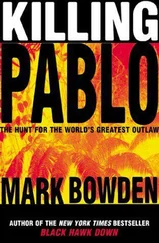Small falsities began to accrue around the story like splashes of glitter. It started almost immediately. Sitting on the couch in Carney’s office after the president’s remarks, John Brennan told reporters, “The American team engaged in a firefight… Osama bin Laden did resist.” He went on to say that the men in the compound “certainly had used women as human shields.” The next day he went further, saying that bin Laden himself had used his wife as a shield, as part of an effort to paint the al Qaeda leader as cowardly and hypocritical—“Here is Osama, living in a million-dollar compound, hiding behind women who were put in front of him as a shield. It speaks to just how false his narrative has been over the years… he’s putting other people out there to wage jihad while he is secure in his luxury compound.”
In future interviews, Obama’s oft-voiced conviction that al Qaeda was the appropriate enemy and his direction to his intelligence chiefs to move finding bin Laden to the “top of the list” would be portrayed as the impetus that led to finding him, after the previous years of futility. In conversations with me, a number of top administration officials used the expression “limited bandwidth” to describe how even high priorities within administrations can be pushed aside or even forgotten—specifically, how Bush’s two wars had crowded out the bin Laden hunt. Obama had made similar comments in his speeches, particularly as a candidate in 2007 and 2008, when he argued that President Bush had “taken his eye off the ball.”
Early on in the planning, Obama had insisted that the SEAL team be prepared to fight its way out of Pakistan rather than defend the compound and wait for the United States to negotiate its exit. This was a risky call, made for the right reasons. The president was placing the safety of American soldiers above concerns for preserving diplomatic ties with Pakistan. Approaching the mission this way, which had not been Admiral McRaven’s suggestion, might have meant leaving in its wake dead Pakistani soldiers and police and downed Pakistani fighters. Making that decision had altered the planning for the mission, requiring the addition of more backup forces and other options. Members of Obama’s staff, after the fact, would point to this decision as critical to rescuing the mission after the first Black Hawk crashed. Only because the president had insisted on a beefed-up backup plan, they argued, did McRaven have the ready recourse of a Chinook loaded with a Quick Reaction Force.
In the weeks after the raid, analysis of the documents seized at the compound revealed, as CIA and administration officials presented it, that bin Laden had not been the isolated, irrelevant figure some said he had become, but, rather, had been actively steering his organization from his hiding place, hatching assassination plots against Obama and Petraeus, for example, and setting in motion further attacks on the U.S. homeland.
Then there was Vice President Biden, with his special gift for the self-aggrandizing overstatement, now in the service of his boss, who would call the raid “the most audacious plan in five hundred years.” Biden said that Obama had made this gutsy call after being roundly advised not to, suggesting that only Leon Panetta had been clearly in favor of it. He said Obama had “a backbone like a ramrod.”
Versions of all this appeared in accounts of the raid and its aftermath. It was not a coordinated effort, just a cumulative one. Pulling all of it together, the official glitterized version of the tale could be summarized thusly. A bold new president resorted national defense priorities to go after bin Laden. At his direction, the moribund hunt was revitalized, and a new lead to the al Qaeda leader was found and developed. It discovered bin Laden living not in a mountain cave but, rather, like a millionaire in a “luxury” compound in a polite Pakistani suburb. Steered by the president in strict secrecy, the military was emboldened and directed to alter its plan to, in effect, surrender to Pakistani authorities if discovered, and instead to prepare sufficient backup forces to confront any resistance head-on—to be ready to fight its way out. It was this advice that saved the mission, because when a Black Hawk crashed, a backup helicopter was at hand. Surrounded by advisers who either were opposed to launching the raid or expressed deep misgivings, the president overrode them to order one of the boldest military actions in human history. The brave SEALs then killed Osama bin Laden in a firefight inside the compound, despite his effort to shield himself behind his wife. Documents seized at the compound revealed that bin Laden had been a hands-on leader of the terror organization, not just a sidelined recluse.
There is some truth to this version, but only some.
Start with Obama’s direction to Panetta and Mike Leiter in May 2009, summoning them to that impromptu huddle in the Oval Office. The newly elected president did make it clear that he regarded the hunt for bin Laden and Ayman al-Zawahiri as the top national security priority of his administration. But did that really change anything? One senior intelligence official told me that it did not.
“This did not represent a big change,” he said. “We were already doing everything we could, and had been for years.”
Obama’s urgency did have an effect, he said, forcing the various bin Laden team leaders to prepare regular progress reports. He also said that having Director Panetta so actively interested “tends to focus people… I think that requiring regular updates pushed our guys even harder, but I doubt that was the reason for the breakthrough. The resources available didn’t change at all. Our focus on AQ senior leaders never suffered from a lack of resources, certainly not the hunt.”
Viewed dispassionately, it appears that the trail to Abbottabad resulted not from redirection but from a slow grind. Each of the critical “breaks,” such as learning the pseudonym “Ahmed the Kuwaiti” from several sources, finding out his true identity in 2007, locating him in 2010, and tracking him to Abbottabad, came as the result of steady, patient, unremarkable effort over many years. None of the breaks was even recognized as significant until the compound started raising eyebrows. Until then, Ahmed the Kuwaiti was just one of many, many thousands of possible leads, stored in a growing catchall database. The more remarkable achievement was connecting these disparate facts, and even then the sum of them led only to the residence of a man suspected of once acting as a courier and aide to bin Laden. It was because the CIA had been following every lead for nine years that the compound was found, and because its analysts had been thinking long and hard about how bin Laden might be living—without heavy security, surrounded by his wives and family, with only one or two trusted aides—that they found the configuration of the compound so compelling. So the argument that it was Obama’s redirection of effort in 2009 that led to bin Laden is true only insofar as every step on the road to success turns out to have been the right one. It was a factor. Obama deserves credit for it. The larger truth is that finding bin Laden was a triumph of bureaucratic intelligence gathering and analysis, an effort that began under President Clinton and improved markedly after 9/11 under President Bush. The effort was going to continue for as long as it took. It took just under ten years. It is hard to find one man in the wide world when he is smart about not being found.
It should also be noted this effort did involve torture, or at the very least coercive interrogation methods. The first two mentions of Ahmed the Kuwaiti were made by Mohamedou Ould Slahi and Mohammed al-Qahtani in coercive interrogation sessions. The third, the misleading characterization of the Kuwaiti as retired by Khalid Sheik Mohammed, came during one of his many waterboarding sessions. Hassan Ghul verified the Kuwaiti’s central role during secret interrogation sessions at an undisclosed CIA detention center. It is not known what methods were used on Ghul, but the agency did seek permission from the Justice Department to employ coercion. There is no simplistic narrative of a hard-pressed detainee coughing up a critical lead, but there is also no way of knowing if these disclosures would have come without resorting to harsh methods. In the case of Qahtani, in particular, given his long nd stubborn resistance, it seems unlikely. Torture may not have been decisive, or even necessary, but it was clearly part of the story.
Читать дальше












